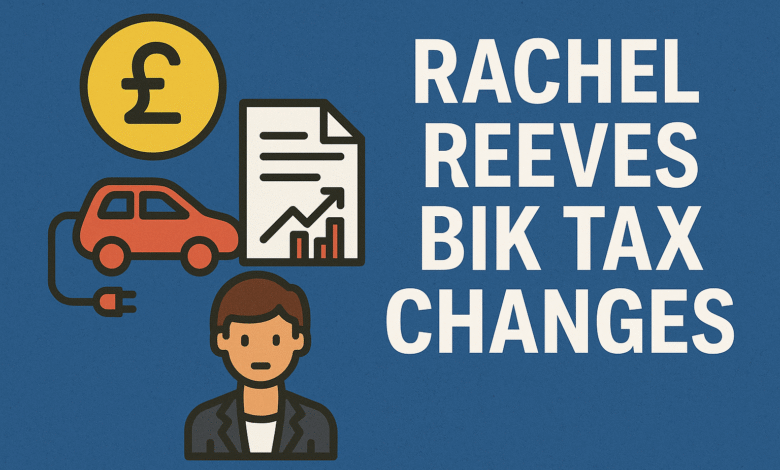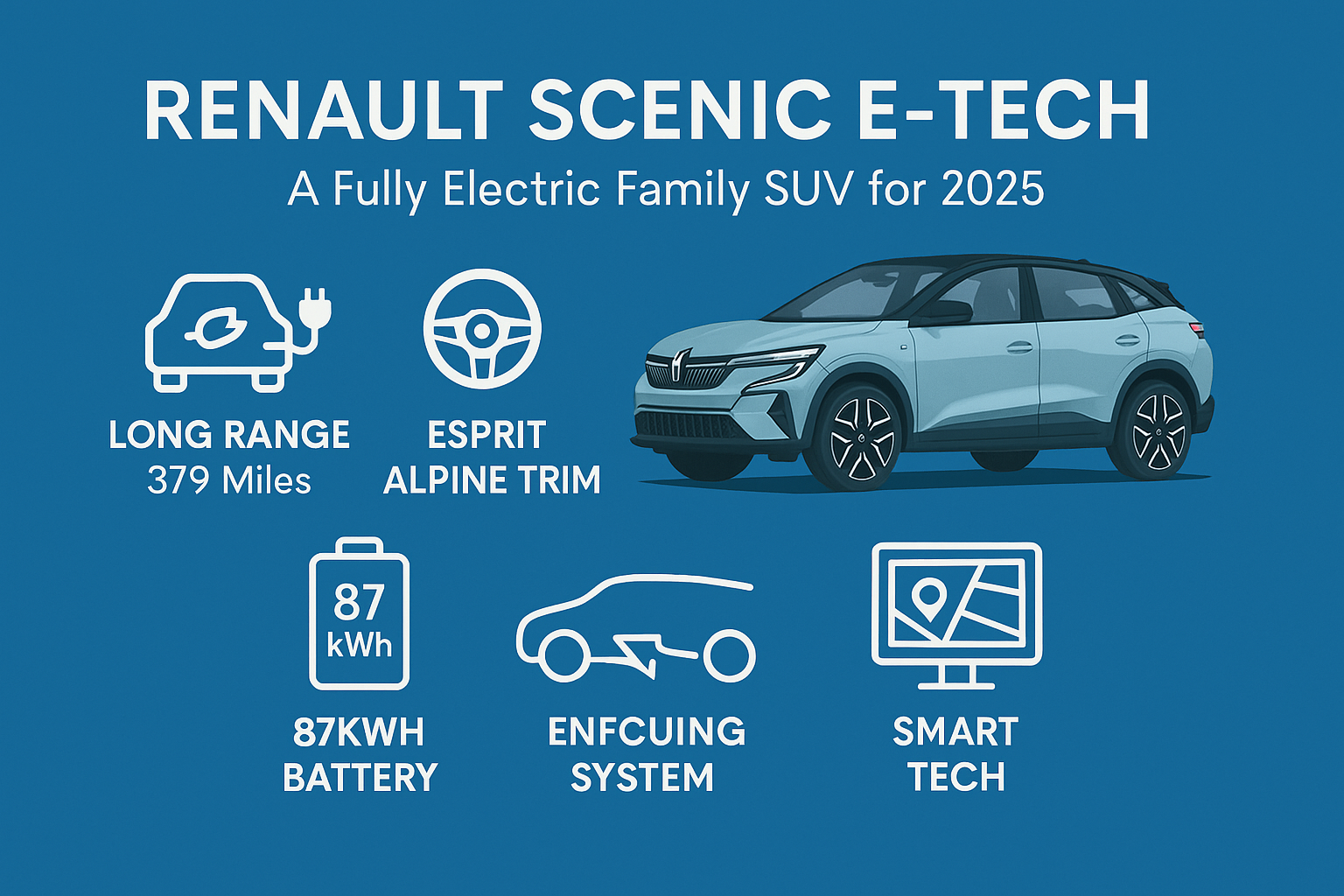Rachel Reeves BIK Tax Changes: Bold Reform or Costly Burden?
A powerful shift in UK company car taxation—balancing green incentives with rising costs

Introduction
Rachel Reeves, the UK Chancellor since July 2024, has introduced sweeping Benefit-in-Kind (BIK) tax reforms as part of her broader fiscal and environmental agenda. These changes, effective from April 2025, are reshaping how businesses and employees engage with company vehicles—particularly electric cars.
While some view the move as a necessary step to ensure long-term revenue and environmental balance, others see it as an erosion of once-generous tax perks. This article explores the “Rachel Reeves BIK tax changes” in full, covering who gains, who loses, and how businesses can adapt.
Quick Overview
| Quick Fact | Details |
|---|---|
| Policy Name | Rachel Reeves BIK Tax Changes |
| Effective From | April 2025 |
| BIK Rate for EVs (2025/26) | 3% (rising to 9% by 2029/30) |
| Current BIK Rate for EVs | 2% (2024/25) |
| Top BIK Rate for Petrol/Diesel | 38% (rising to 39% by 2029/30) |
| Employer NIC Increase | From 13.8% to 15% starting April 2025 |
| EV Vehicle Excise Duty (VED) | £10 first year, £195 annually from second year |
| Double-Cab Pickups Reclassified | Now taxed as cars, no longer under van exemption |
| Main Purpose | Increase revenue, align benefits with green policy goals |
| Key Impact Area | Company cars, salary sacrifice, EV affordability |
Who Is Rachel Reeves?
Rachel Reeves is the first female Chancellor of the Exchequer in British history, appointed in July 2024 under the Labour government. With a background in economics and public service, Reeves quickly became known for bold fiscal decisions and a focus on economic “securonomics.”
Her administration’s key aim is balancing public finances while encouraging green investment. The BIK tax changes reflect this approach—phasing out EV incentives while still promoting lower-emission options compared to traditional petrol and diesel cars.
What is BIK, and Why Do the Changes Matter?
Benefit-in-Kind (BIK) is a tax applied to employees who receive non-cash perks such as company cars. The tax is calculated based on several factors: the vehicle’s CO₂ emissions, its P11D value (including VAT and optional extras), the set BIK percentage, and the employee’s income tax band.
Historically, electric vehicles benefited from ultra-low BIK rates—just 2%—making them a cost-efficient choice for employees. However, Reeves’s reforms will slowly erode this advantage, altering the financial landscape for employers and employees alike.
BIK Rate Schedule for Electric, Hybrid & High‑Emission Cars
The new schedule introduces gradual increases in BIK tax for electric and hybrid vehicles while maintaining the maximum rates for high-emission vehicles.
From April 2025, the BIK rate for EVs will rise from 2% to 3%, eventually climbing to 9% by 2029/30. Petrol and diesel cars with emissions over 170 g/km will maintain a maximum BIK rate of 37%, which will increase to 39% by 2030.
Yearly BIK Changes Summary
| Tax Year | EV BIK Rate | Petrol/Diesel Max Rate |
|---|---|---|
| 2024/25 | 2% | 37% |
| 2025/26 | 3% | 38% |
| 2026/27 | 4% | 38% |
| 2027/28 | 5% | 38% |
| 2028/29 | 7% | 38% |
| 2029/30 | 9% | 39% |
Linked Changes to Vehicle Excise Duty (VED) & Employer NIC
In tandem with BIK reforms, Reeves has adjusted Vehicle Excise Duty (VED). From April 2025, new EVs will lose their exemption and face a £10 first-year charge, followed by a £195 annual standard rate.
Also notable is the rise in Employer National Insurance Contributions (NIC), climbing from 13.8% to 15%, alongside a threshold reduction from £9,100 to £5,000. This combination of changes increases the cost burden on businesses offering car benefits.
Additional Notable Changes
Double-cab pick-up vehicles, such as the Ford Ranger or Toyota Hilux, will no longer be taxed as commercial vans but instead as passenger cars. This reclassification exposes them to higher BIK rates, surprising many businesses.
There are also hints at future reforms targeting high-value electric vehicles (those exceeding £40,000) and potential restrictions on salary sacrifice schemes, which have previously allowed high earners to significantly reduce their tax liabilities.
Summary: Who Gains & Loses Under These Changes
Winners:
-
The Treasury, which gains steady tax revenue through rising BIK and VED
-
Early EV adopters who secured their vehicles before 2025
Losers:
-
Employees using high-value EVs or hybrids
-
Businesses managing fleets of newly taxed double-cab pickups
-
Companies facing rising NIC obligations due to the new employer thresholds
Practical Takeaways
For businesses, the key to mitigating costs lies in careful timing and planning. Locking in a company car lease before April 2025 can help preserve lower BIK rates for several years.
Employees should use this window to explore EV options under current salary sacrifice arrangements. Despite upcoming changes, electric cars will still offer tax advantages over petrol or diesel counterparts—just not as dramatically as before.
Why This Package of Tax Changes?
These tax adjustments are not arbitrary. They align with Rachel Reeves’s broader “securonomics” strategy, which emphasizes financial stability, responsible taxation, and investment in green infrastructure.
By reducing overly generous perks, Reeves is repositioning the tax code to be both environmentally aligned and fiscally responsible—avoiding deficits while still nudging companies toward low-emission solutions.
Final Verdict
The Rachel Reeves BIK tax changes signal a clear shift in the UK’s vehicle benefit strategy. Electric vehicles, while still favored, will face steadily increasing taxes, reducing their overall appeal as salary sacrifice perks.
For businesses and high-income employees, this means acting quickly to secure current deals before the reforms bite deeper. Still, the message is clear: EVs are no longer the tax haven they once were—but they remain a smarter choice than high-emission alternatives.
Frequently Asked Questions (FAQ)
Q1: What is the new BIK rate for electric cars in 2025?
Starting April 2025, the BIK rate for electric vehicles will increase from 2% to 3%.
Q2: How does this affect salary sacrifice schemes?
While still beneficial, salary sacrifice schemes will become slightly less tax-efficient due to rising BIK and NIC rates.
Q3: What’s changing in Vehicle Excise Duty (VED) for EVs?
EVs will no longer be exempt from VED. A £10 first-year rate and £195 annual charge will apply from April 2025.
Q4: Will petrol and diesel cars also face BIK increases?
Yes. Vehicles emitting over 75 g/km CO₂ will see their BIK rise by 1% in 2025/26, with some rising as high as 39% by 2030.
Q5: Should I still choose an EV for my company car?
Yes. Despite higher taxes, EVs still offer lower BIK compared to high-emission petrol or diesel vehicles.

